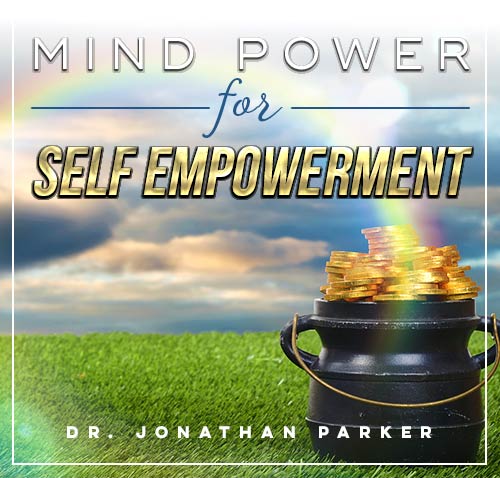The Science Behind Brain Wave Frequencies

Before diving in, please note: This post is for informational purposes only. If you’d like to know more about how we approach topics, feel free to check out our friendly Disclaimer Page.
Hey there, amazing readers! 🖐️ Just a quick note: yes, we know there are a lot of ads here. Trust us, we get it—it’s not the prettiest look, but they help us keep this blog alive and kicking. Those pesky little ads cover the costs of all the behind-the-scenes magic, from hosting and tech stuff to creating content we hope you’ll love.
We’re committed to delivering quality posts, and your support (even just sticking around despite the ads) means everything to us. So, bear with us, and thanks for helping us keep the good vibes rolling. Now, on to the fun stuff! 😉
TRANSLATE BUTTON AT THE END OF THE ARTICLE
Introduction to Brain Wave Frequencies
When we think about the brain, we often imagine a complex network of neurons firing signals to control our thoughts, emotions, and actions.
But did you know that the brain also produces different types of electrical patterns known as brain waves?
These brain waves, with their unique frequencies, play a crucial role in determining our state of mind, from deep sleep to peak awareness.
Understanding these brain wave frequencies can provide valuable insights into how our brains function and how we can optimize our cognitive performance and emotional well-being.
Understanding Brain Waves
Brain waves are rhythmic electrical impulses produced by the brain when neurons communicate with each other.
These waves can be measured using electroencephalography (EEG), a non-invasive technique that records the electrical activity of the brain through electrodes placed on the scalp.
Each type of brain wave corresponds to a specific frequency range and is associated with different states of consciousness, such as deep sleep, relaxation, alertness, or peak concentration.
Types of Brain Wave Frequencies
There are five main types of brain wave frequencies, each with its unique characteristics and functions.
These are Delta, Theta, Alpha, Beta, and Gamma waves, ranging from the slowest to the fastest frequencies.
Each type of brain wave is linked to specific mental states and activities, providing a window into how our brains operate in various situations.
Delta Waves: The Deepest Sleep State
Delta waves are the slowest brain waves, with frequencies ranging from 0.5 to 4 Hz.
These waves are predominantly present during deep sleep stages, such as dreamless sleep and unconsciousness.
Delta waves are crucial for restorative sleep, physical healing, and growth hormone release.
They are associated with deep relaxation, regeneration, and the body’s natural ability to repair and rejuvenate itself during sleep.
Theta Waves: The Gateway to Subconscious
Theta waves have frequencies between 4 and 8 Hz and are commonly observed during light sleep, deep meditation, and REM (rapid eye movement) sleep.
Theta waves are linked to creativity, intuition, and accessing the subconscious mind.
In the theta state, the mind is highly receptive to new ideas, insights, and imagery, making it an ideal state for problem-solving, self-reflection, and spiritual experiences.
Alpha Waves: The State of Relaxation
Alpha waves oscillate at frequencies between 8 and 13 Hz and are prevalent when we are awake but in a relaxed and calm state.
These waves are associated with a relaxed alertness, creativity, and a sense of well-being.
Alpha waves play a vital role in reducing stress, enhancing focus, and improving mental clarity.
They are often seen during meditation, light mindfulness, and moments of deep relaxation.
Beta Waves: The Active Mind State
Beta waves range from 13 to 30 Hz and are present when we are awake, alert, and engaged in activities that require focus and concentration.
These waves are associated with active thinking, problem-solving, decision-making, and high cognitive functioning.
Beta waves play a crucial role in critical thinking, logical reasoning, and mental processing.
They are essential for staying attentive, productive, and responsive to external stimuli.
Gamma Waves: The Peak Awareness State
Gamma waves are the fastest brain waves, with frequencies above 30 Hz.
These waves are related to peak cognitive performance, heightened awareness, and intense focus.
Gamma waves are crucial for information processing, memory recall, learning, and sensory perception.
They are often seen during moments of insight, inspiration, and peak mental performance, making them essential for problem-solving, creativity, and advanced cognitive abilities.
Role of Brain Wave Frequencies in Cognitive Function
Brain wave frequencies play a significant role in shaping our cognitive function, mental abilities, and overall brain health.
Each type of brain wave is associated with specific cognitive processes, such as memory consolidation, attention, creativity, and problem-solving.
By understanding and modulating our brain wave frequencies, we can enhance our cognitive performance, improve learning outcomes, and optimize our brain’s potential for higher-level thinking.
Brain Wave Frequencies and Emotional Regulation
In addition to cognitive function, brain wave frequencies also influence our emotional well-being and psychological state.
Different types of brain waves can impact our mood, stress levels, and emotional responses.
For example, alpha waves are linked to relaxation and stress reduction, while beta waves are associated with anxiety and overthinking.
By regulating our brain wave frequencies through mindfulness, meditation, or biofeedback techniques, we can better manage our emotions, reduce stress, and promote emotional resilience.
Practical Applications of Brain Wave Frequencies
Understanding brain wave frequencies has practical applications in various fields, including healthcare, education, sports, and personal development.
EEG biofeedback, also known as neurofeedback, is a technique that uses real-time monitoring of brain waves to train individuals to modify their brain wave patterns consciously.
This approach has been used to treat conditions such as ADHD, anxiety, depression, and insomnia by targeting specific brain wave frequencies associated with these disorders.
In healthcare, brain wave frequencies are used in neurofeedback therapy to improve mental health, treat neurological disorders, and enhance cognitive function.
In education, brain wave training techniques can help students improve focus, memory, and learning abilities by optimizing their brain wave patterns.
In sports, athletes can benefit from neurofeedback to enhance their performance, concentration, and mental resilience under pressure.
In personal development, individuals can use brain wave entrainment technologies, such as binaural beats or isochronic tones, to synchronize their brain waves for relaxation, stress relief, or improved sleep quality.
Conclusion: Harnessing Brain Wave Frequencies for Well-being
In conclusion, brain wave frequencies are a fascinating aspect of brain function that influences our cognitive abilities, emotional states, and overall well-being.
By understanding the different types of brain waves and their roles in consciousness, we can harness this knowledge to optimize our mental performance, enhance emotional regulation, and promote holistic well-being.
Whether through mindfulness practices, neurofeedback training, or brain wave entrainment techniques, there are various ways to modulate our brain wave frequencies for improved cognitive function, emotional balance, and overall brain health.
By exploring the science behind brain wave frequencies, we can unlock the potential of our brains and empower ourselves to lead healthier, more fulfilling lives.

The Enlightenment Journey is a remarkable collection of writings authored by a distinguished group of experts in the fields of spirituality, new age, and esoteric knowledge.
This anthology features a diverse assembly of well-experienced authors who bring their profound insights and credible perspectives to the forefront.
Each contributor possesses a wealth of knowledge and wisdom, making them authorities in their respective domains.
Together, they offer readers a transformative journey into the realms of spiritual growth, self-discovery, and esoteric enlightenment.
The Enlightenment Journey is a testament to the collective expertise of these luminaries, providing readers with a rich tapestry of ideas and information to illuminate their spiritual path.
Our Diverse Expertise 🌟
While our primary focus is on spirituality and esotericism, we are equally passionate about exploring a wide range of other topics and niches 🌍📚. Our experienced team is dedicated to delivering high-quality, informative content across various subjects ✨.
To ensure we provide the most accurate and valuable insights, we collaborate with trusted experts in their respective domains 🧑🏫👩🏫. This allows us to offer well-rounded perspectives and knowledge to our readers.
Our blog originally focused on spirituality and metaphysics, but we’ve since expanded to cover a wide range of niches. Don’t worry—we continue to publish a lot of articles on spirituality! Frequently visit our blog to explore our diverse content and stay tuned for more insightful reads.






